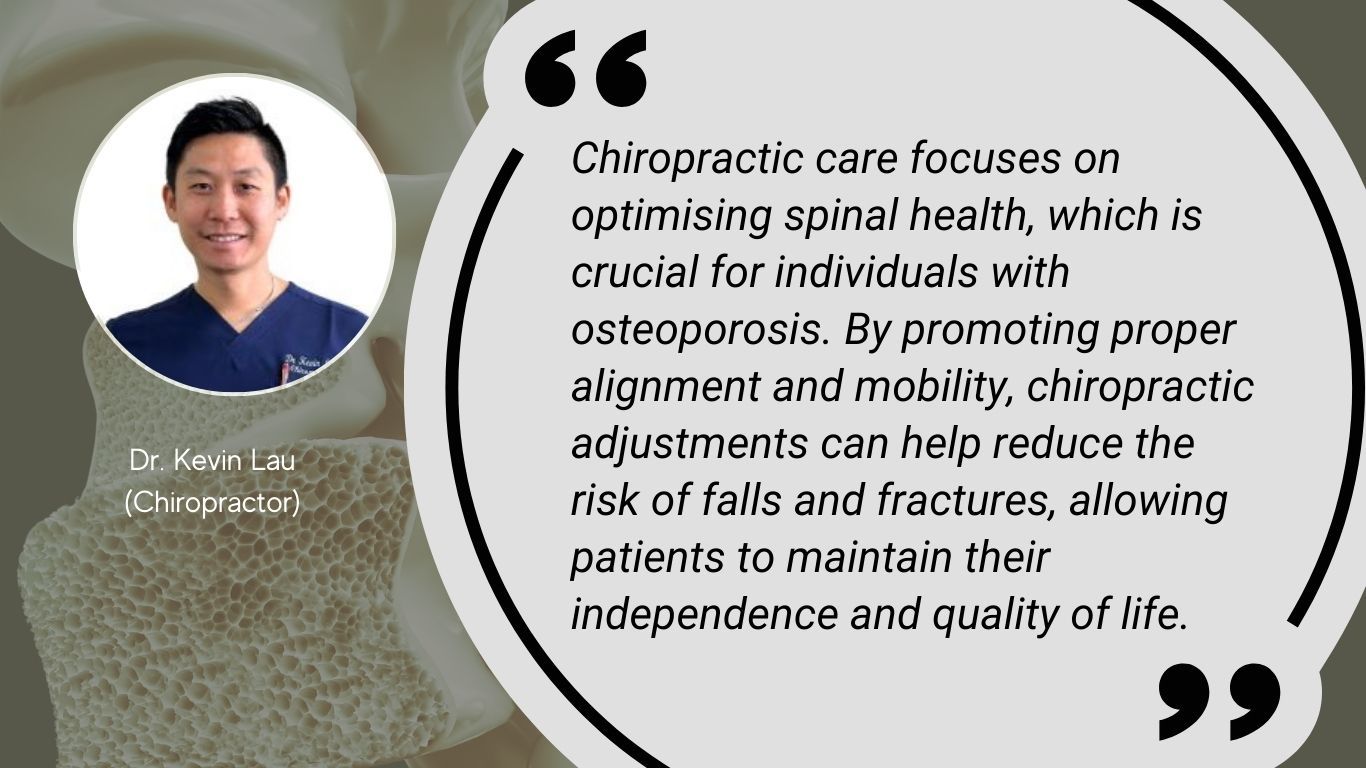Osteoporosis, often referred to as the "silent disease," is a condition characterised by weakened bones that are more prone to fractures. This debilitating condition affects millions of individuals worldwide, particularly older adults, and can have a significant impact on quality of life. Understanding osteoporosis, its symptoms, and available treatments, including chiropractic care, is essential for effectively managing this condition and promoting bone health.
Understanding Osteoporosis
Osteoporosis is a progressive bone disease characterised by low bone mass and deterioration of bone tissue. This leads to an increased risk of fractures, particularly in the hips, spine, and wrists. The condition often develops gradually over years, with bone density decreasing and bone structure weakening, making bones more fragile and susceptible to fractures.
Who Might Get Osteoporosis
While osteoporosis can affect individuals of any gender and age, it is most commonly diagnosed in postmenopausal women due to hormonal changes that affect bone density. However, men, younger women, and even children can also develop osteoporosis, particularly if they have certain risk factors such as a family history of the disease, low body weight, smoking, excessive alcohol consumption, or a sedentary lifestyle.
Symptoms of Osteoporosis
In its early stages, osteoporosis may not cause any noticeable symptoms, earning it the nickname of the "silent disease." However, as the condition progresses, individuals may experience symptoms such as:
-
Back pain, caused by vertebral fractures or collapsed vertebrae.
-
Loss of height over time, due to compression fractures in the spine.
-
Fractures that occur with minimal trauma, such as a fall from standing height.
It's important to note that fractures resulting from osteoporosis can have serious consequences, including chronic pain, disability, and loss of independence.
Treatment for Osteoporosis
Managing osteoporosis typically involves a combination of lifestyle changes, medications, and therapeutic interventions aimed at strengthening bones and reducing fracture risk. Common treatments may include:
-
Medications: Calcium and vitamin D supplements, bisphosphonates, hormone therapy, and other medications may be prescribed to help increase bone density and reduce the risk of fractures.
-
Lifestyle Modifications: Regular weight-bearing exercise, such as walking or strength training, can help improve bone strength and overall health. A balanced diet rich in calcium and vitamin D is also essential for maintaining bone health.
-
Fall Prevention: Taking steps to prevent falls, such as removing tripping hazards from the home, installing handrails and grab bars, and wearing appropriate footwear, can help reduce the risk of fractures.
-
Chiropractic Care: Chiropractic care offers a holistic approach to managing osteoporosis by focusing on spinal alignment, posture correction, and musculoskeletal health. Chiropractors utilise gentle spinal adjustments, manual therapies, and rehabilitative exercises to improve spinal mobility, reduce pain, and enhance overall well-being in patients with osteoporosis.
How Chiropractic Can Help
Chiropractic care plays a vital role in osteoporosis management by addressing musculoskeletal imbalances, reducing pain, and improving spinal function. Chiropractors use precise adjustments to gently realign the spine, alleviate pressure on the nerves, and restore proper biomechanics. By enhancing spinal mobility and stability, chiropractic care can help reduce the risk of fractures and improve overall quality of life for individuals with osteoporosis.
Dr. Kevin Lau, a seasoned chiropractor, emphasises the importance of chiropractic care in osteoporosis management and bone health. "Chiropractic care focuses on optimising spinal health, which is crucial for individuals with osteoporosis. By promoting proper alignment and mobility, chiropractic adjustments can help reduce the risk of falls and fractures, allowing patients to maintain their independence and quality of life."
In addition to spinal adjustments, chiropractors may incorporate other therapeutic modalities such as therapeutic exercise, nutritional counselling, and lifestyle recommendations to support bone health and overall wellness.

Conclusion
Osteoporosis is a prevalent and potentially debilitating condition that requires comprehensive management to reduce fracture risk and improve quality of life. While medications and lifestyle modifications play important roles in osteoporosis treatment, chiropractic care offers a safe and effective complement to conventional therapies. By focusing on spinal health, posture correction, and musculoskeletal function, chiropractors can help individuals with osteoporosis maintain mobility, reduce pain, and enhance overall well-being.
If you or a loved one are living with osteoporosis, consider incorporating chiropractic care into your treatment plan to optimise bone health and support your journey to a healthier, more active life.
